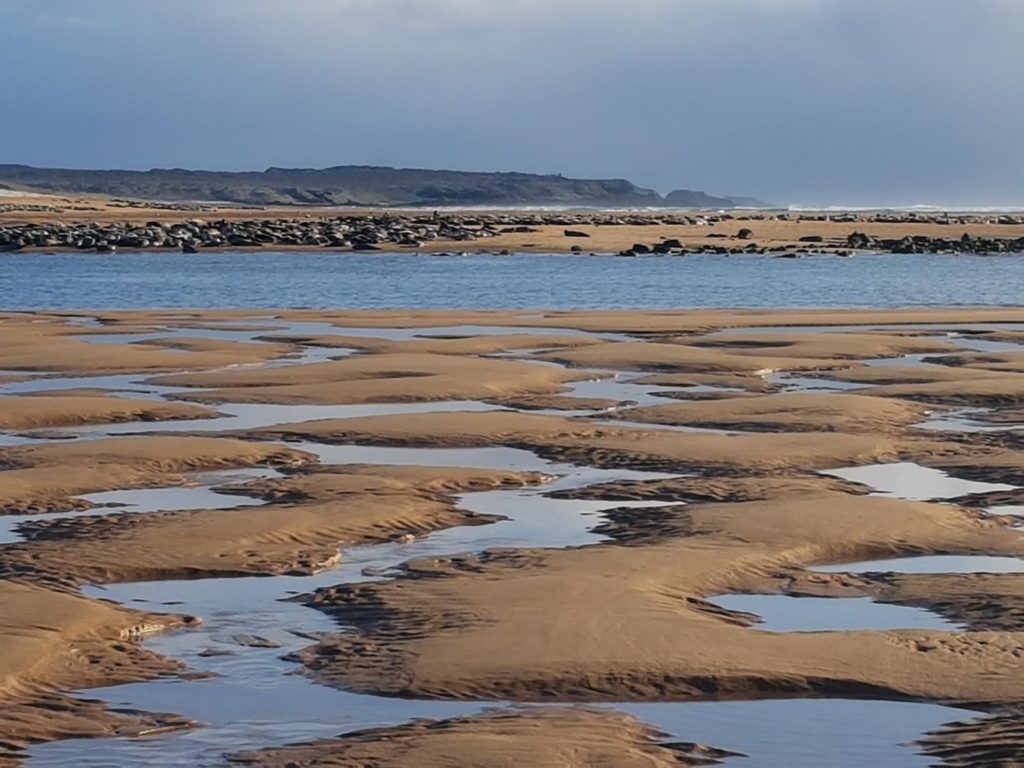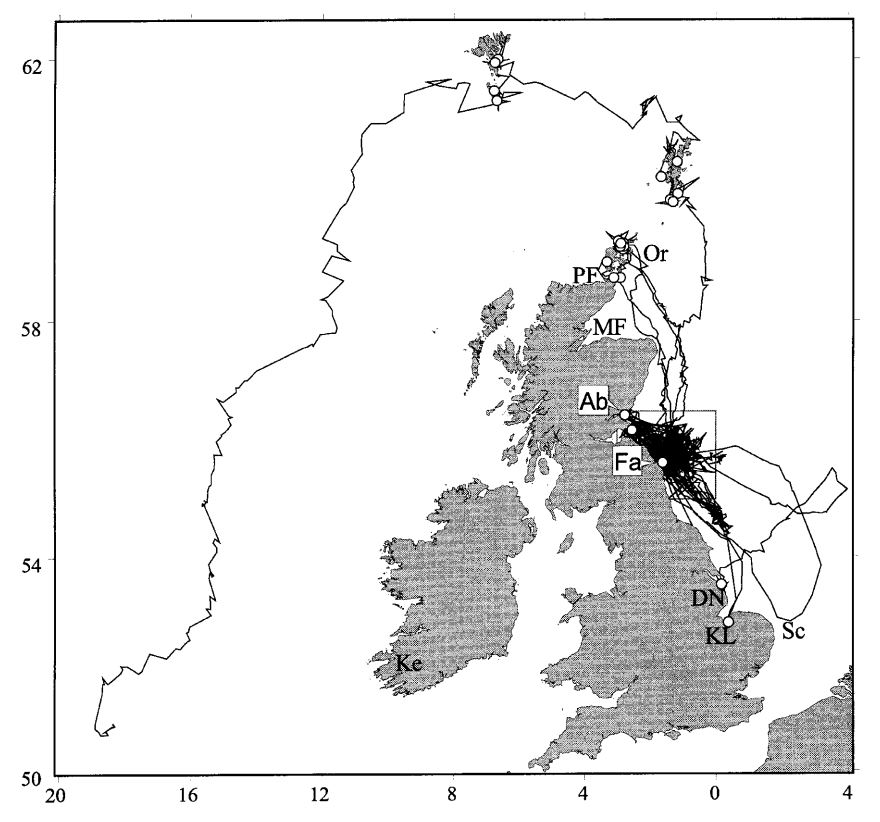SEALS
(and Birds)

Our Seals
The seal colony at Newburgh has two types of seals: harbour (or common) seals and grey seals. At times there are hundreds hauled out on the north shore, and sometimes none.
Grey seals tend to be bigger, with big heads and a longer pointy snout. Harbour seals are smaller and cuter, with big gooey-eyes and short snouts. Harbour seals often lie on the sand with their tails up. They eat all types of fish, and especially the sea trout and salmon the Ythan is famous for. They can live between 20 – 30 years. More information can be found here on harbour seals and grey seals, and here. This page gives you details of what the seals eat in the Ythan (mainly flat fish).

When to see the seals
The best time to see them is just after low tide when the flood tide starts. This is when the adults tend to be very active and enter the water to catch fish. They tend to disappear late summer, early autumn to feed and get ready to breed, but even then there are normally a few individuals swimming about. Look for their heads breaking the surface.
Where to see them
The best place is from the south shore. Take the turning next to the Newburgh Inn and head along the road to the end where there is a car park (height restricted to normal cars and SUVs). Don’t forget the nice café at the Golf Club which is open to the public – the View.
Please do not try to visit them on the north shore. This is a protected area, and you could get into trouble if you disturb either birds or seals there.
Dogs welcome on the south shore, but best keep them on a lead near the seal colony. For one thing, dogs in the water have been known to be attacked by seals.
Little’uns
Parent seals often leave pups on the shore on their own when they go and feed. Please just leave these alone, and no need to call the police ! Mum will be coming back.

Where do seals get to ?
This map shows the amazing distances some seals go. It looks like each individual seal can make very different journeys. Some just stay around Scotland. Some travel much further, even as far as the Faroe Islands! You can find out more in this scientific paper.

Don't forget the birds
The Ythan estuary is a great place to see all sorts of marine and water birds. It is famous for eider ducks (the ones that make the cooing noise on the north shore), but also herons, waders, terns and skuas. See here for more details, and here. There is a bird hide if you park in the car park just to the north of the bridge towards Newburgh.